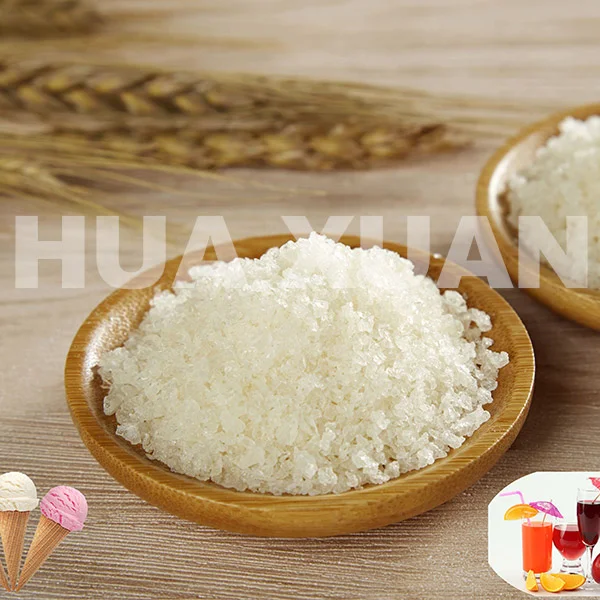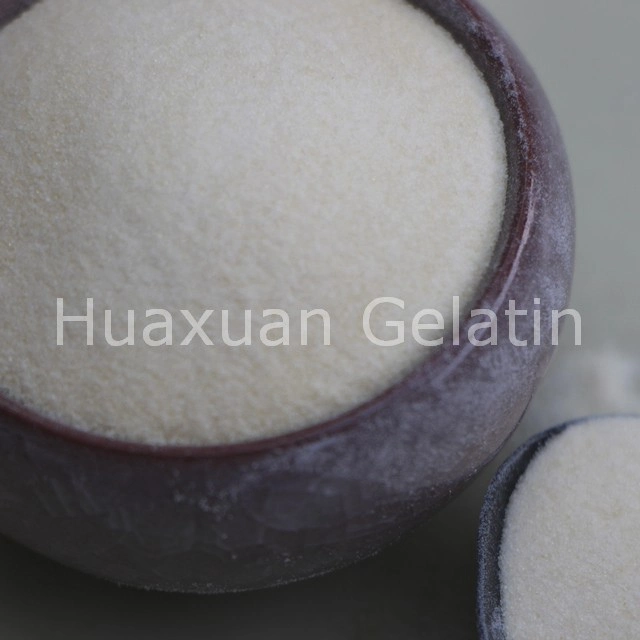Gelatin for jelly


Related products
-
 Read moreQuick View
Read moreQuick View
- High production capacity, sufficient inventory
- We support customized services.
- One-stop service to meet your needs.
As a seasoned cook and avid jelly maker, I have found that using gelatin is the key to achieving the perfect jelly consistency. Gelatin is a protein obtained from collagen, which is found in the bones and connective tissues of animals. It is a versatile ingredient that can be used in a variety of dishes, including jellies, mousses, and panna cotta. In this article, I will share with you the different types of gelatin for jelly making, the advantages of using gelatin, the gelatin to liquid ratio for perfect jelly consistency, tips for using gelatin powder, and answers to frequently asked questions about gelatin for jelly making.
Get A Quote
Product Description
| Product Name | gelatin | Net weight | 5 tons | |
| Standard | GB/T6783-2013 | |||
| Appearance | Light yellow to yellow granule | |||
| Inspection items | Unit | Standard | Test result | |
| Jelly Strength (6.67%, 10 ℃) | Bloom.g | ≥150 | 150-260bloom | |
| Engler Viscosity(6.67%, 40 ℃) | °E | ≥10 | 13.4 | |
| Viscosity degradation(6.67 %,37℃) | % | ﹤7.0 | 3.21 | |
| Luminousness | 450nm | % | ≥70 | 86.4 |
| 620nm | % | ≥90 | 95.6 | |
| PH | 4.0-7.2 | 5.6 | ||
| Moisture | % | 10-14 | 13 | |
| Ash Content | % | ≤2.0 | 0.76 | |
| Chromium | ppm | ≤2.0 | 0.2 | |
| Heavy metal | % | ≤0.003 | Meet the specification | |
| Arsenic salt | % | ≤1 | 0.01 | |
| Insoluble particles | % | ≤0.2 | 0.01 | |
| Peroxide | mg/kg | ≤10 | ﹤1 | |
| Total Bacterial Count | cfu/g | ≤10000 | ﹤10 | |
| Salmonella | 10g | negative | Not detected | |
| Colibacillus | g | ≤3 | ﹤0.3 | |
| Mucedine | Cfu/g | ≤100 | ﹤10 | |
| Conclusion | Passed | |||
Different Types of Gelatin for Jelly Making
There are two main types of gelatin available in the market – sheet gelatin and powdered gelatin. Sheet gelatin is also known as leaf gelatin and is available in different grades, with gold, silver, and bronze being the most common. Powdered gelatin, on the other hand, is available in different strengths and grades, with bloom strength being the most important factor to consider. Bloom strength refers to the measure of the firmness of the gelatin, with higher bloom strength resulting in a firmer set.
Sheet gelatin is usually preferred by professional chefs and bakers because it is easier to measure and dissolve. It is also preferred for recipes that require a delicate and smooth texture. Powdered gelatin, on the other hand, is more widely available and is easier to use for home cooks. It is also less expensive than sheet gelatin.
Advantages of Using Gelatin for Jelly Making
Gelatin has several advantages when it comes to making jellies. Firstly, it has the ability to set liquids into a solid form, which is essential for jelly making. Secondly, it is a neutral ingredient that does not affect the taste of the jelly. Thirdly, it is a natural ingredient that is derived from animal sources, making it a healthier alternative to artificial thickeners.
Another advantage of using gelatin is that it allows for a wide range of creativity in jelly making. It can be used to make clear jellies, fruit-flavored jellies, and even savory jellies. Gelatin can also be used to create different textures, from a soft and creamy texture to a firmer and more jelly-like texture.
Gelatin to Liquid Ratio for Perfect Jelly Consistency
The gelatin to liquid ratio is an important factor to consider when making jellies. The general rule of thumb is to use 1 tablespoon of powdered gelatin or 3-4 sheets of sheet gelatin for every 2 cups of liquid. However, this ratio can vary depending on the desired texture and firmness of the jelly.
To achieve the perfect jelly consistency, it is important to dissolve the gelatin properly. For powdered gelatin, it should be sprinkled evenly over the liquid and allowed to sit for a few minutes before heating. For sheet gelatin, it should be soaked in cold water for 5-10 minutes before using.
Tips for Using Gelatin Powder for Jelly
Using gelatin powder for jelly making can be a bit tricky, but with a few tips, it can be a breeze. Firstly, use cold liquid to dissolve the gelatin powder, as hot liquids can break down the gelatin and affect the texture of the jelly. Secondly, do not boil the jelly mixture after adding the gelatin, as this can also break down the gelatin. Lastly, always make sure to follow the gelatin to liquid ratio to achieve the perfect consistency.
Frequently Asked Questions About Gelatin for Jelly Making
Q. Can I substitute agar-agar for gelatin in jelly making? A. Yes, agar-agar can be used as a substitute for gelatin in jelly making. Agar-agar is a plant-based alternative that is derived from seaweed.
Q. Can I use flavored gelatin for jelly making? A. Yes, flavored gelatin can be used for jelly making. However, it is important to adjust the amount of sugar in the recipe to account for the sweetness of the flavored gelatin.
Q. Can I freeze jellies made with gelatin? A. Yes, jellies made with gelatin can be frozen. However, the texture may become slightly altered after thawing.
Q. Can I use gelatin for vegan jelly making? A. No, gelatin is derived from animal sources and is not suitable for vegan jelly making. Agar-agar can be used as a vegan alternative.
Conclusion
In conclusion, gelatin is a versatile ingredient that can be used to create a wide range of jellies. The different types of gelatin available, the advantages of using gelatin, the gelatin to liquid ratio, and tips for using gelatin powder are all important factors to consider when making jellies. By following these guidelines, you can achieve the perfect jelly consistency every time. So go ahead and experiment with different flavors and textures to create your own unique jelly creations.
Related products
-
 Read moreQuick View
Read moreQuick View -
 Read moreQuick View
Read moreQuick View -

 Add to cartQuick View
Add to cartQuick View -

 Add to cartQuick View
Add to cartQuick View

